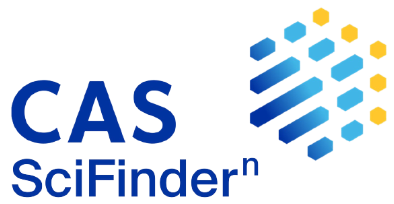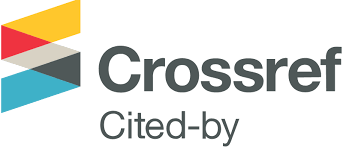Alkenylimidazoles: methods of synthesis and chemical properties
DOI:
https://doi.org/10.24959/ophcj.17.920Keywords:
alkenylimidazoles, synthesis methods, condensation, chemical properties, heterocyclofunctionalizationAbstract
The aim of this review was to summarize and systematize literature on chemistry of alkenylsubstituted imidazoles known as important synthetic substrates and precursors for the synthesis of biologically active substances. Two approaches to the synthesis of these compounds are reviewed: 1) the imidazole ring formation based on functionalized alkenyl compounds; 2) functionalization of imidazole derivatives with the alkenyl moiety. The second approach prevails and includes condensation of methylimidazoles with carbonyl compounds, reactions of formylimidazoles with compounds containing activated methylene groups and phosphorus ylides, as well as reactions of dehydration and dehydrohalogenation of substituted imidazoles. The methods of synthesis of alkenylsubstituted imidazoles have been analyzed in detail; their synthetic potential and limits have been described. Special attention is paid to the authors’ own research on the synthesis of new 4-chloro-5-alkenylsubstituted imidazoles using 5-formylimidazoles as precursors. Analysis of the chemical properties of alkenylsubstituted imidazoles has allowed conducting their strict classification and systematizing their typical transformations. Reactions of cyclocondensation are the first ones to be mentioned, they proceed through the interaction of the alkenyl moiety with another functional group or endocyclic Nitrogen. Other transformations such as heterocyclofunctionalization, oxidation and reduction are based on transformation of the alkenyl moiety. It should be noted that heterocyclization processes are new for chemistry of alkenylimidazoles, they are successfully applied to 5-(2-nitro-alkenyl)- and 5-(2-arylvinyl)substituted derivatives, and due to them it is possible to obtain new promising hybrid structures.Downloads
References
- Fromtling, R. A. (1988). Overview of medically important antifungal azole derivatives. Clinical Microbiology Reviews, 1 (2), 187–217. doi: 10.1128/CMR.1.2.187
- Sharpe, T. R., Cherkofsky, S. C., Hewes, W. E. et al. (1985). Preparation and antiarthritic and analgesic activity of 4,5–diaryl–2–(substituted thio)–1H–imidazoles and their sulfoxides and sulfones. Journal of Medicinall Chemistry, 28 (9), 1188–1194. doi: 10.1021/jm00147a011
- Ucucu, U., Karaburun, N. G., Isikdag, I.(2001). Synthesis and analgesic activity of some 1–benzyl–2–substituted–4,5–diphenyl–1H–imidazole derivatives. Il Farmaco, 56 (4), 285–290. doi: 10.1016/S0014–827X(01)01076–X
- Graczyk, P. P., Khan, A., Bhatia, G. S. et al. (2005). The neuroprotective action of JNK3 inhibitors based on the 6,7–dihydro–5H–pyrrolo[1,2–a]imidazole scaffold. Bioorganic & Medicinal Chemistry Letters, 15 (21), 4666–4670. doi: 10.1016/j.bmcl.2005.07.076
- Laufer, S. A., Zimmermann, W., Ruff, K. J. (2004). Tetrasubstituted imidazole inhibitors of cytokine release: probing substituents in the N–1 position. Journal of Medicinall Chemistry, 47 (25), 6311–6325. doi: 10.1021/jm0496584
- Black, J. W., Durant, G. J., Emmett, J. C. (1974). Sulphur–methylene isosterism in the developent of metiamide, a new histamine H2–receptor antagonist. Nature, 248 (5443), 65–67. doi: 10.1038/248065a0
- Jin, Z. (2009). Muscarine, imidazole, oxazole and thiazole alkaloids. Natural Product Reports, 26 (3), 382–445. doi: 10.1039/B718045B
- Jin, Z. (2006). Imidazole, oxazole and thiazole alkaloids. Natural Product Reports, 23 (3), 464–498. doi: 10.1039/B502166A
- Jin, Z. (2005). Muscarine, imidazole, oxazole and thiazole alkaloids. Natural Product Reports, 22 (2), 196–229. doi: 10.1039/B316104H
- Cui, B., Zheng, B. L., He, K. et al. (2003). Imidazole alkaloids from lepidium meyenii. Journal of Natural Products, 66 (8), 1101–1103. doi: 10.1021/np030031i
- Grimmett, M. R. (1997). Imidazole and benzimidazole synthesis.London: Academic Press., 265.
- Katritzki, A. R., Rees, C. W. (1997). Comprehensive heterocyclic chemistry. Elsevier Science Ltd, 5, 994.
- Kyrides, L. P., Zienty, F. R., Steahly, G. W. et al. (1947). Substituted imidazoles and 2–imidazolines. The Journal of Organic Chemistry, 12 (4), 557–586. doi: 10.1021/jo01168a015
- Cappon, J. J., Witters, K. D., Baart, J. et al. (1994). Synthesis of L–histidine specifically labelled with stable isotopes. Recueil des Travaux Chimique des Pays–Bas. 113 (6), 318–328. doi: 10.1002/recl.19941130603
- Olson, G. L., Cheung, H.–C., Chiang, E. et al. (1995). Peptide mimetics of thyrotropin–releasing hormone based on a cyclohexaneframework design, synthesis, and cognition–enhancing properties. Journal of Medicinall Chemistry, 38 (15), 2866–2879. doi: 10.1021/jm00015a009
- Kuwano, E., Takeya, R., Eto, M. (1989). Pat. US4812473 A. 1,5–Disubstituted imidazoles as inhibitors of juvenile hormone. declared 24.03.1987; published 14.03.1989.
- Arbonés, C., Sánchez, F. J., Marco, M.–P. et al. (1990). Fluorinated analogues of the imidazole insect growth regulator KK–42. Heterocycles, 31 (1), 67–78. doi: 10.3987/COM–89–5125
- Shafiee, A., Rastkary, N., Foroumadi, A. (1998). Syntheses of 2–(2–arylethyl)imidazoles. Journal of Heterocyclic Chemistry, 35 (3), 607–610. doi: 10.1002/jhet.5570350319
- Henry, D.W., Brown, V. H., Cory, M. et al. (1973). Chemotherapeutic nitroheterocycles. Antischistosomal properties of nitrofurylvinyl and nitrothienylvinyl heterocycles. Journal of Medicinall Chemistry, 16 (11), 1287–1291. doi: 10.1021/jm00269a015
- Henry, D. W., Cory, M. (1976). Pat. US3993643. A N–substituted 2–[2–(5–nitro–2–furyl)vinyl]imidazoles. declared 07.05.1976; published 23.11.1976.
- DeBernardis, J. F., Gifford, P., Rizk, M. et al. (1988). Evaluation of the side arm of (naphthylvinyl)pyridinium inhibitors of choline acetyltransferase. Journal of Medicinall Chemistry, 31 (1), 117–121. doi: 10.1021/jm00396a017
- Suwiriski, J., Swierczek, K. (1993). Nitroimidazoles XVII. Nucleophilic amination or ring transformation in reactions of l–aryl–4–nitroimidazoles with 4–amino–1,2,4–triazole or hydroxylamine. Tetrahedron, 49 (24), 5339–5350. doi: 10.1016/S0040–4020(01)82383–8
- Allsebrook, W. E., Gulland, J. M., Story, L. F. (1942). The constitution of purine nucleosides. Part X. A new synthesis of xanthine and attempted syntheses of xanthine glucosides from glyoxalines. Journal of the Chemical Society, 232–236. doi: 10.1039/JR9420000232
- Baddiley, J., Buchanan, J. G., Hardy, F. E. (1959). Chemical studies in the biosynthesis of purine nucleotides. Part 111. The synthesis of 5–amino–l–(β–D–ribofuranosyl)glyoxaline–4–carboxyamide and 4–amino–l–(β–D–ribofuranosyl)glyoxaline–5–carboxyamide. Journal of the Chemical Society, 2893–2901. doi: 10.1039/JR9590002893
- Tantravedi, S., Chakraborty, S., Shah, N. H. et al. (2013). Analogs of iso–azepinomycin as potential transition–state analog inhibitors ofguanase: synthesis, biochemical screening, and structure–activity correlations ofvarious selectively substituted imidazo[4,5–e][1,4]diazepines. Bioorganic & Medicinal Chemistry Letters, 21 (17), 4893–4903. doi: 10.1016/j.bmc.2013.06.069
- Giraldi, P. N., Mariotti, V., De Carneri, I.(1968). Antiprotozoans. Synthesis and biological activity of some styrylimidazole derivatives. Journal of Medicinall Chemistry, 11 (1), 66–70. doi: 10.1021/jm00307a014
- Chan, E., Putt, S. R., Showalter, H. D. H. et al. (1982). Total synthesis of (8R)–3–(2–deoxy–β–D–erythro–pentofuranosyl)–3,6,7,8–tetrahydroimidazo[4,5–d][1,3]diazepin–8–ol (pentostatin), the potent inhibitor of adenosine deaminase. The Journal of Organic Chemistry, 47 (18), 3457–3464. doi: 10.1021/jo00139a015
- Asato, G., Berkelhammer, G. (1972). Nitroheterocyclic antimicrobial agents. 1–Methyl–2–nitro–5–imidazolyl derivatives. Journal of Medicinall Chemistry, 15 (10), 1086–1088. doi: 10.1021/jm00280a030
- Cavalleri, B., Ballotta, R., Lancini, G.C. (1972). Synthesis of 1–alkyl–2–nitroimidazole–5–carboxaldehydes. Journal of Heterocyclic Chemistr, 9 (5), 979–984. doi: 10.1002/jhet.5570090502
- Cavalleri, B., Ballotta, R., Arioli, V. et al. (1973). New 5–substituted 1–alkyl–2–nitroimidazoles. Journal of Medicinall Chemistry, 16 (5), 557–560. doi: 10.1021/jm00263a035
- Cavalleri, B., Volpe, G., Arioli, V. (1977). Synthesis and biological activity of some vinyl–substituted 2–nitroimidazoles. Journal of Medicinall Chemistry, 20 (5), 656–660. doi: 10.1021/jm00215a007
- Burnett, F. N., Hosmane, R. S. (2002). Synthesis of a novel ring–expanded purine analogue containing a5:8–fused imidazo[4,5–e][1,2,4]triazocine ring system amidstopportunistic rearrangements and ring transformations. Tetrahedron, 58 (47), 9567–9578. doi: 10.1016/S0040–4020(02)01252–8
- Hosmane, R.S. Bhan, A. , Rauser, M. E. (1985). Facile conversion of 4(5)–nitro–5(4)–methylimidazoles into4(5)–nitro–5(4)–cyanoimidazoles. The Journal of Organic Chemistry, 50 (26), 5892–5895. doi: 10.1021/jo9824910
- Burnett, F. N., Hosmane, R. S. (1997). Imidazo[4,5–e][1,2,4]triazocine: a novel 5:8–fused ring system riddled with rearrangements. Heterocyclic Communications, 45 (5), 857–861. doi: 10.3987/COM–97–7783
- Ross, W. J., Todd, A. (1973). Antiparasitic nitroimidazoles. 7. Some 4– and5–styrylnitroimidazoles. Journal of Medicinall Chemistry, 16 (7), 863–865. doi: 10.1021/jm00265a030
- Burnett, F. N., Hosmane, R. S. (1995). Synthetic approaches to 5:8–fused heterocyclic systems. A novel rearrangement during the synthesis of imidazo[4,5–e][1,2,4]triazocine ring system. Nucleosides & Nucleotides, 14 (3–5), 325–328. doi: 10.1080/15257779508012373
- Siddiqui, S., Hosmane, R. S. (2000). Synthetic analogue of stilbene containing an imidazole nucleus. Molecules, 5 (6), 856–863. doi: 10.3390/50600856
- Alcalde, E. , Roca, T. , Fayet, J. P. et al. (1991). Aza–analogs of stilbene with a dipolar character. (E)–1–alkyl–(2–(azolyl–2–idene)etylidene)–dihydropyridines and (E)–2–(2–(1–alkyl–3–pyridinium)vinyl)azolate inner salts. Chemistry Letters, 20 (12), 2151–2154. doi: 10.1246/cl.1991.2151
- Alcalde, E., Roca, T. (1992). Heterocyclic betaines. 14. (E)–l–Alkyl–[2–(imidazol–2–ylidene)ethylidene]dihydropyridines with a betaine character. An improved protocol for a Knoevenagel–type condensation for synthesis of(E)–l–alkyl–[2–(1H–imidazol–2–yl)vinyl]pyridinium salts. European Journal of Organic Chemistry, 57 (18), 4834–4838. doi: 10.1021/jo00044a015
- Fichera, M., Fortuna, C.G., Impallomeni, G. et al. (2002). Studies on the interactions of the new 2,6–bis[2–(heteroaryl)vinyl]–1–methylpyridinium cations with the decamer d(CGTACGTACG)2. The Journal of Organic Chemistry, 2002 (1), 145–150. doi: 10.1002/1099–0690(20021)2002
- Adamo, M. F. A., Duffy, E. F. , Konda, V. R. et al. (2007). An improved synthesis of 3–methyl–4–nitro–5–heteroarylethenylisoxazoles. Heterocycles, 71 (5), 1173 – 1181. doi: 10.3987/COM–07–11023
- Karjalainen, A. J., Kangas, L. V. M., Kurkela, K. O. A. (1992). Pat. US5098923 A. Aromatase inhibiting 4(5)–imidazoles. declared 27.09.1990; published 24.03.1992.
- McNab, H., Thornley, C. (1997). New synthetic routes to pyrrolo–[1,2–a]– and –[1,2–c]–imidazol–5–ones by flash vacuum pyrolysis. Journal of the Chemical Society, Perkin Transactions 1, 15, 2203–2209. doi: 10.1039/A701751K
- Crozet, M. D., Suspеne, C., Kaafarani, M. et al. (2004). Synthesis of a new imidazo[4,5–b]pyridin–5–one via a vicarious nucleophilic substitution of hydrogen Heterocyclic Communications, 63 (7), 1629–1635. doi: 10.3987/COM–04–10069
- Keenan, R. M., Weinstock, J., Finkelstein, J. A. et al. (1993). Potent nonpeptfde angiotensin II receptor antagoqists. 2. 1–(Carboxybenzyl)imidazole–5–acrylic acids. Journal of Medicinal Chemistry, 36, 1880–1892. doi: 10.1021/jm00065a011
- Karjalainen, A., Kalapudas, A., Sodervall, M. et al. (2000). Synthesis of new potent and selective aromatase inhibitors based on long–chained diarylalkylimidazole and diarylalkyltriazole molecule skeletons. European Journal Pharmaceutical Sciences, 11 (7), 109–131. doi: 10.1016/S0928–0987(00)00074–9
- Ono, M., Hori, M., Haratake, M. et al. (2007). Structure–activity relationship of chalcones and related derivatives as ligands for detecting of β–amyloid plaques in the brain. Bioorganic & Medicinal Chemistry, 15, 6388–6396. doi: 10.1016/j.bmc.2007.06.055
- Nakayama, M., Haratake, M., Ono, M. (2009). Pat. EP2030635 A1. Composition for diagnosing amyloid–related disease. declared 22.05.2007; published 04.03.2009.
- Shioiri, N., Mikami, T., Morimoto, S. et al. (2000). Pat. US6071943 A. Іmidazole derivative and medicinecomprising the same as activeingredient. declared 30.11.98; published 06.06.00.
- Omar, A. M., Mahran, M. A., Ghatge, M. S. et al. (2015). Identification of a novel class of covalent modifiersof hemoglobin as potential antisickling agents. Organic & Biomolecular Chemistry, 13 (22), 6353–6370. doi: 10.1039/c5ob00367a
- Selvakumar, N., Kumar, G. S., Azhagan, A. M. et al. (2007). Synthesis, SAR and antibacterial studies on novel chalcone oxazolidinone hybrids. European Journal of Medicinal Chemistry, 42 (4), 538–543. doi: 10.1016/j.ejmech.2006.10.013
- Chornous, V. A., Melnik, O. Ya., Hrozav, A. N. et al. (2014). Zhurnal orhanichnoi ta farmatcevtychnoi khimii – Journal of Organic and Pharmaceutical Chemistry, 12 (3), 28–32.
- Chornous, V. A., Grozav, A. N., Melnik, O. Ya. et al. (2015). Polyfunctional imidazoles: X. Synthesis of 4–chloro–5–(2–nitroalkenyl)–1H–imidazoles and their reaction with 5–methyl–2,4–dihydro–3H–pyrazol–3–one. Russian Journal Organic Chemistry, 51 (4), 251–257. doi: 10.1134/S1070428015040132
- Chornous, V. A., Melnik, O. Ya., Kutsyk, R. V., Vovk, M. V. (2014). Nauk. visnyk Chernivetskoho universytetu, 683. „Khimiia”. Chernivtsi: Chernivetskyi natsionalnyi universytet, 90–96.
- Chornous, V. A., Melnik, O. Ya., Hliebov, O.M. et al. (2016). Zhurnal orhanichnoi ta farmatcevtychnoi khimii – Journal of Organic and Pharmaceutical Chemistry, 14 (1), 46–52.
- Melnik, O. Ya., Melnik, D. A., Chornous, V. A., Melnichenko, N. V., Vovk, M. V. (2016). Visnyk Lvivskoho universytetu. Seriia khimichna, 57 (2), 280–285.
- Kokosa, J. M., Szafasz, R. A., Tagupa, E. (1983). Practical multigram synthesis for 4(5)–vinylimidazole. The Journal of Organic Chemistry, 43 (20), 3605–3607. doi: 10.1021/jo00168a062
- Cheng, J.–F., Chen, M., Liu, B., Hou, Z. et al. (2006). Design and synthesis of heterocyclic malonyl–CoA decarboxylase inhibitors. Bioorganic & Medicinal Chemistry Letters, 16, 695–700. doi: 10.1016/j.bmcl.2005.10.020
- Ohta, M., Suzuki, T., Koide, T. et al. (1996). Novel 5–hydroxytryptamine (5–HT3) receptor antagonists. I. Synthesis and structure–activity relationships of conformationally restricted fused imidazole derivatives. Chemical and Pharmaceutical Bulletin, 44 (5), 991–999. doi: 10.1248/cpb.44.991
- Wolf, U. (1981). 7H–Imidazo[1.2–a]– und –[1.5–a]azepin–7–one. Zeitschrift fur Naturforschung B: Chemical Sciences, 36 (3), 383 – 385. doi: 10.1515/znb–1981–0321
- Pizzirani, D., Roberti, M., Grimaudo, S. et al. (2009). Identification of biphenyl–based hybrid molecules able to decrease the intracellular level of bcl–2protein in bcl–2 overexpressing leukemia cells. Journal of Medicinal Chemistry, 52 (21), 6936–6940. doi: 10.1021/jm900907s
- Dombrovskyy, V.A., Hracheva, E.V., Prokof’ev, E.P. (1989). Khimiko–Farmatsevticheskii Zhurnal, 23 (12), 1496–1498.
- Leclaire, J., Mazari, M., Zhang, Y. et al. (2013). Bare histidine–serine models: implication and impact of hydrogen bondingon nucleophilicity. Chemistry A European Journal, 19 (34), 11301–11309. doi: 10.1002/chem.201301275
- Karjalainen, A. J., Kurkela, K. O. A. (1987). Pat. USRE32400 E. Substituted imidazole derivatives and their use as anti–thrombosis agents. declared 30.07.1985; published 14.04.1987.
- Hack, S., Wörlein, B., Höfner, G. et al. (2011). Development of imidazole alkanoic acids as mGAT3 selective GABA uptakeinhibitors. European Journal of Medicinal Chemistry, 46 (5), 1483–1498. doi: 10.1016/j.ejmech.2011.01.042
- Amino, Y., Eto, H., Eguchi, C. (1989). Synthesis of 1,5–disubstituted imidazoles including an imidazole analogue of prostaglandin from 4(5)–hydroxymethylimidazole. Chemical and Pharmaceutical Bulletin, 37 (6), 1481–1487. doi: 10.1248/cpb.37.1481
- Deredas, D., Skowron, M., Salomon, E. et al. (2007). Stereocontrolled synthesis of enantiomeric imidazolopiperidinosesand imidazoloazepanoses using Wittig/dihydroxylation reactions. Tetrahedron, 63 (13), 2915–2922. doi: 10.1016/j.tet.2007.01.016
- Lawson, J. K. (1953). 2–Vinylimidazole and 1–methyl–2–vinylimidazole. Journal of the American Chemical Society, 75 (14), 3398–3400. doi: 10.1021/ja01110a029
- Karjalainen, A. J., Pelkonen, R. O. (1995). Pat. US5439928 A. Aromatase inhibiting 4(5)–imidazoles. declared 19.05.1993; published 08.08.1995.
- Sartori, G., Lancini, G. C., Cavalleri B. (1978). Synthesis of 5–substituted 1–methyl–2–nitro–1H–imidazoles (2–l4C. Journal of Labelled Compounds and Radiopharmaceuticals, 15 (S1), 673–680. doi: 10.1002/jlcr.2580150180
- Pat. EP2095819 A1 (2008). N–Benzyl imidazole derivatives and their use as aldosterone synthase inhibitors. declared 28.02.2008; published 02.09.2009.
- Rendy, R., Zhang, Y., McElrea, A. et al. (2008). Superacid–catalyzed reactions of cinnamic acids and the role ofsuperelectrophiles. The Journal of Organic Chemistry, 69 (7), 2340–2347. doi: 10.1021/jo030327t
- Clark, B. A. J., Despinoy, X. L. M., McNab, H. et al. (1999). Pyrolytic cyclisation reactions of 3–azolylpropenyl alcohols; unexpectedly facile thermal decomposition of 5H–pyrrolo–[2,1–a]isoindole. Journal of the Chemical Society, Perkin Transactions 1, 15, 2049–2051. doi: 10.1039/A904884G
- Pollak, A., Polanc, S., Stanovnik, B. et al. (1972). Uber ringoffnungen einiger azolo– und azinoazine. Monatshefte fur Chemie, 103 (6), 1591–1603. doi: 10.1007/BF00904613
- Pollak, A., Stanovnik, B., Tišler, M. (1971). Pyridazines. XLVI. Ring opening of some azolo andazino pyridazines. Synthetic Communications, 1 (4), 289–293. doi: 10.1080/00397917108082711
- Rothenberg, V. A. S., Dauplaise, D. L., Punier, H. P. (1983). Ein einfacher weg zu 2–vinylimidazolen. Angewandte Chemie, 95 (7), 573–574. doi: 10.1002/ange.19830950727
- Arshad, N., Hashim, J., Kappe, C. O. (2009). Palladium(0)–catalyzed, copper(I)–mediated coupling of cyclic thioamides with alkenylboronic acids, organostannanes, and siloxanes. The Journal of Organic Chemistry, 74 (14), 5118–5121. doi: 10.1021/jo900848s
- Rothenberg, A. S., Panzer, H. P., Schmitt, J. L. et al. (1983). Pat. US4410706. Preparation of Z–vinylimidazoles by dehydrogenation of Z–ethylimidazoles and Z–ethylimidazolines. declared 19.05.1982; published 18.10.1983.
- Chen, Y., Dias, H. V. R., Lovely, C.J. (2003). Synthesis of fused bicyclic imidazoles by ring–closing metathesis. Tetrahedron Letters, 44 (7), 1379–1382. doi:10.1016/S0040–4039(02)02864–2
- Benhida, R., Lezama, R., Fourrey, J.–L. (1998). First total Synthesis of fungerin an antifungal alkaloid from Fusarium sp. Tetrahedron Letteres, 39 (33), 5963–5964. doi: 10.1016/S0040–4039(98)01203–9
- Haapalinna, A., Huhtala, P., Karjalainen, A. (2004). Pat. EP1261588 B1. Imidazole compounds as alpha 2–adrenoceptors antagonists. declared 12.01.2001; published 20.10.2004.
- Karjalainen, A., Huhtala, P., Savola, J.–M. (2001). Pat. US6313311 B1. Imidazole derivatives having affinity for alpha2 receptors. declared 02.10.1996; published 06.11.2001.
- Lovely, C. J,. Du, H., Sivappa R. (2007). Preparation and Diels–Alder chemistry of 4–vinylimidazoles. The Journal of Organic Chemistry, 72 (10), 3741–3749. doi: 10.1021/jo0626008
- Gorugantula, S. P., Carrero–Martınez, G. M., Dantale, S. W. et al. (2010). Palladium–catalyzed reductive N–heterocyclization of alkenyl–substituted nitroarenes as a viable method for the preparation of bicyclic pyrrolo–fused heteroaromatic compounds. Tetrahedron, 66 (10), 1800–1805. doi: 10.1016/j.tet.2010.01.029
- Li, A., Gilbert, T. M., Klumpp, D. A. (2008). Preparation of aza–polycyclic aromaticcompounds via superelectrophilic cyclizations. The Journal of Organic Chemistry, 73 (9), 3654–3657. doi: 10.1021/jo8003474
- Chornous, V. A., Melnik, O. Ya., Melnik, D. A. et al. (2015). Polyfunctional imidazoles: XI. Reaction of 1–aryl–4–chloro–5–(2–nitrovinyl)–1H–imidazoles with nonstabilized azomethine ylides. Synthesis of (1–aryl–4–chloro–1H–imidazol–5–yl)–substituted nitropyrrolidines and nitropyrrolizines. Russian Journal Organic Chemistry, 51 (10), 1423–1429. doi: 10.1134/S1070428015100115
- Chornous, V. O., Melnik, O. Ya., Melnik, D. O. et al. (2016). Ukrainskii Khimicheskii Zhurnal, 82 (5), 44–52.
- Melnik, O. Ya., Chornous, V. A., Vovk, M. V. (2015). Polyfunctional imidazoles: IX. Synthesis of 1–aryl–5–(2–aryl–3,4–dihydro–2H–pyrrol–4–yl)–4–chloro–1H–imidazoles. Russian Journal Organic Chemistry, 51 (2), 240–244. doi: 10.1134/S1070428015020189
- Baker, D. C., Putt, S. R., Showalter, H. D. H. (1983). Studies related to the total synthesis of pentostatin. Approaches to the synthesis of (8R)–3,6,7,8–tetrahydroimidazo–[4,5–d][l,3]diazepin–8–ol and N–3 alkyl congeners. Journal of Heterocyclic Chemistry, 20 (3), 629–634. doi: 10.1002/jhet.5570200324
- Baker, D.C., Putt, S.R. (1979). A total synthesis of pentostatin, the potent inhibitor of adenosine deaminase. Journal of American Chemical Society, 101(20), 6127–6128. doi: 10.1021/ja00514a048
- Keller, M., Trankle, C., She, X. et al. (2015). M2 Subtype preferring dibenzodiazepinone–type muscarinic receptor ligands: Effect of chemical homo–dimerization on orthosteric (and allosteric) binding. Bioorganic & Medicinal Chemistry, 23 (14), 3970–3990. doi: 10.1016/j.bmc.2015.01.015
- Aulaskari, P., Ahlgren, M., Vainiotalo, P. (2000). Preparation of 1–substituted–5–[(2–oxo–2–phenyl)ethyl]imidazoles. Journal of Heterocyclic Chemistry, 37 (1), 87–93. doi: 10.1002/jhet.5570370114
- Aulaskari, P., Pohjalab, E., Vainiotalo, P. (1997). Synthesis of 1–substituted–5–[(2–nitro–2–phenyl)–ethyl]imidazoles. Synthetic Communications, 27 (15), 2627–2635. doi: 10.1080/00397919708004132
- Le, P. Q., Nguyen, T. S., May, J. A. (2012). A general method for the enantioselective synthesis of α‑chiral heterocycles. Organic Letters, 14 (23), 6104–6107. doi: 10.1021/ol3030605
- Guerin, D. J., Miller, S. J. (2002). Asymmetric azidation–cycloaddition with open–chain peptide–based catalysts. A sequential enantioselective route to triazoles. Journal of American Chemical Society, 124 (10), 2134–2136. doi: 10.1021/ja0177814
Downloads
Published
How to Cite
Issue
Section
License
Copyright (c) 2017 National University of Pharmacy

This work is licensed under a Creative Commons Attribution 4.0 International License.
Authors publishing their works in the Journal of Organic and Pharmaceutical Chemistry agree with the following terms:
1. Authors retain copyright and grant the journal the right of the first publication of the work under Creative Commons Attribution License allowing everyone to distribute and re-use the published material if proper citation of the original publication is given.
2. Authors are able to enter into separate, additional contractual arrangements for the non-exclusive distribution of the journal’s published version of the work (e.g., post it to an institutional repository or publish it in a book) providing proper citation of the original publication.
3. Authors are permitted and encouraged to post their work online (e.g. in institutional repositories or on authors’ personal websites) prior to and during the submission process, as it can lead to productive exchanges, as well as earlier and greater citation of published work (see The Effect of Open Access).














